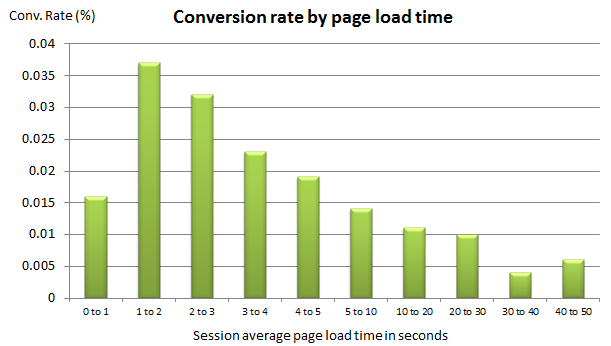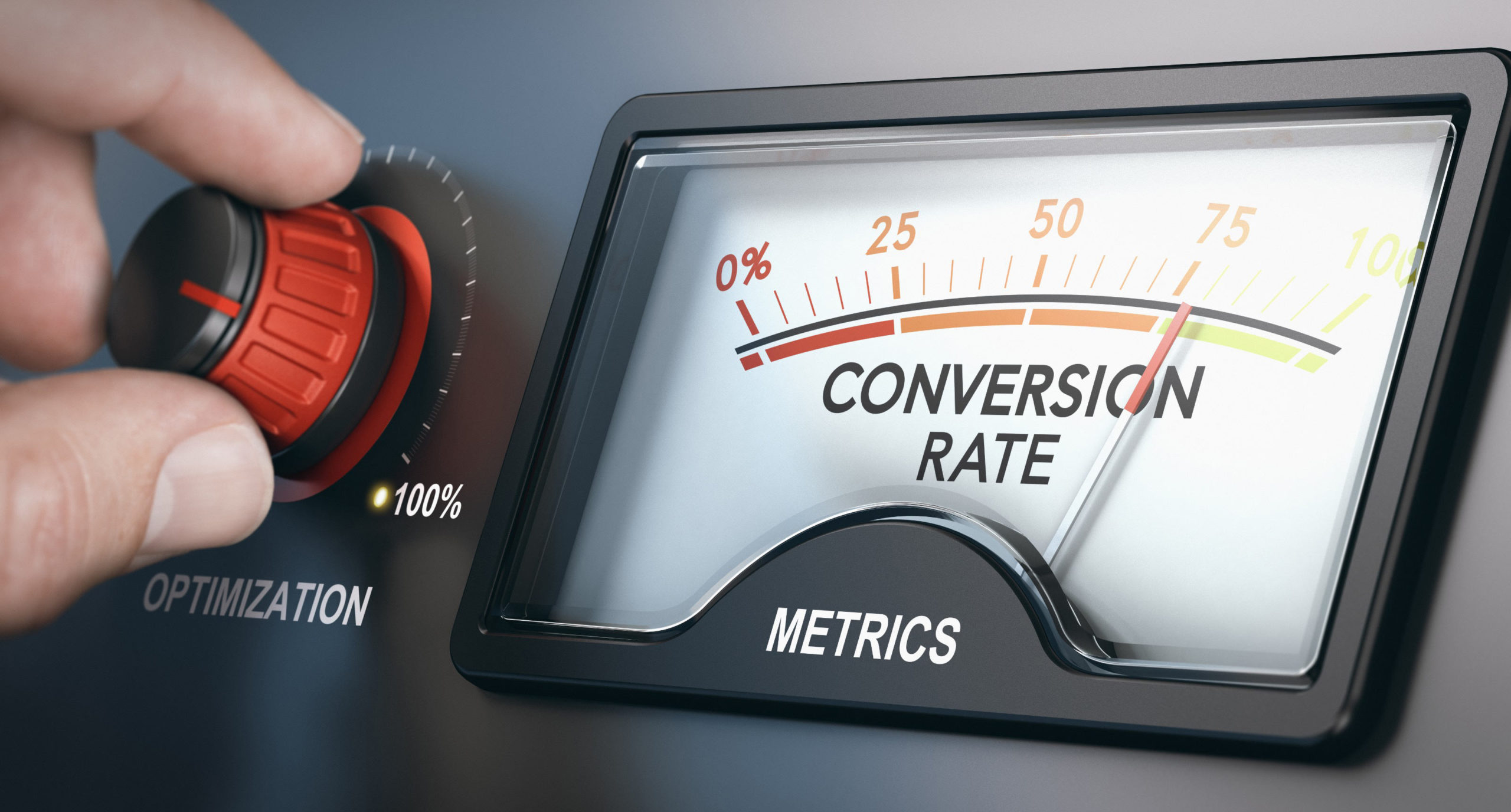In eCommerce, conversion rate is one of the most important metrics to take into account. Of course, a 100% conversion rate is never going to happen (even if you were selling ice water in the Sahara), but you still try to get it as high as it can go. Across the board, conversion rates average at about 3%, with consumer electronics having among the lowest (1.4%) and gifts among the highest (4.9%).
One way to increase sales and revenue is to increase the number of people coming to your site. If your site is around the average conversion rate and has 1,000 visitors per day, then you’ll get about 30 orders per day. Upping your marketing may result in let’s say 500 more visitors per day and around 45 purchases. However, if you overreach with your marketing, you may end up targeting less relevant people. This will result in more clicks, but will oftentimes lower your conversion rate and drain your marketing budget at the same time.
The other way to increase sales is to bump up your conversion rate, so getting more of those 1,000 daily visitors to convert and maximize that marketing budget bringing people in. There are many things you can try to up your conversion rate, but site performance is one of the main ones.
Let’s get into the ways site performance affects your conversion rate and what steps you can take to make sure it’s as good as can be.
Site Speed
The most clear-cut example of how site performance impacts the user experience is site speed. We’ve all been on social media and seen an interesting article or product and clicked. Then waited. And waited. And then gave up after a bit because it seemed cool, but not “wait 15 seconds” cool.
Especially now that most browsing on the web is conducted on mobile devices, you really need to build a light site that can load on slower data like 3G as people are waiting for the bus without WiFi. Beyond that, attention spans are shorter and shorter with each passing year and people have higher expectations when it comes to speed. Generally, people expect a load time of 2 seconds or fewer.

After those first couple of seconds, the users drop-off and your conversion rate falls. Going from a 1.9% conversion rate with a 2.4 second load time to a .6% conversion rate for a 5.7 second load time is huge for a company’s sales. Oftentimes, you’re not only just missing out on a sale, but losing your marketing budget if these people came to your slow site by way of a pay-per-click ad.
Fortunately, your eCommerce site is something you are completely in control of and site speed can be optimized. Compressing images, leveraging browser caching, and reducing your redirects are just a few of the ways to reduce your load times. Of course, it helps to have experts maintain your site who can implement all this and ensure your pages are lean from the get go. It’s just one of the reasons businesses can benefit from having an eCommerce partner.
Here are a few stats showing just how impactful site speed is:
- Webpages that load in 2.4 seconds have a conversion rate of 1.9%
- 3.3 second load time and conversion rate drops to 1.5%
- 4.2 seconds leads to a conversion rate below 1%
- After 5.7 seconds of loading and conversion rate was 0.6%
- 70% of consumers are less likely to buy from an online store that is slow to load.
- Conversion rates drop drastically after the first 5 seconds of load time.
- Users really want sites to load quickly- even if it requires the removal of animations, videos, and images.
Page Layout
The formatting, fonts, and colors are certainly a major aspect of any website. Attractive sites are simply nicer to look at, but the functions they support are more important for your conversion rate. Even if your site is beautifully designed, if the search bar is difficult to find or if you have popups that you aren’t able to close on a mobile device, people won’t get very far down your sales funnel.
When building your site, your goal is to make it as easy as possible for your customers to find products they like and to check out. This is most easily achieved by keeping up with industry standards and ensuring your pages are properly organized, easy to search, and not too cluttered with extraneous text and images.
You want to take advantage of extensions and other features to enable the smoothest customer journey possible. If you’re working with Magento, one of the most powerful eCommerce platforms available, you will have plenty of customization options available to you.
Navigation
Similar to page layout, navigation is so important when it comes to eCommerce and maximizing checkouts. People have grown accustomed to certain things when they shop online and many of those are pretty simple navigational features: they want to easily search your site, there should be product filtering on the left, and they want to see breadcrumbs.
Making sure that people aren’t getting lost on your site will ensure they can always go back to a product they saw previously. If you have any external links, either to articles on other sites or your own social media pages, make sure that you’re opening them in a new tab. One of the worst things to do is bring people onto Facebook and have them instantly forget all about your online store because they see a funny cat video!
Checkout
Checking out is where a lot of people drop off and change their minds.
While there are always follow-up remarketing tactics you can take to bring these people back, you still want to make sure your checkout process is working as smoothly as possible on your end.
Providing 1-click checkout for returning customers, multiple popular payment options, and reassuring them their data is secure are just a few ways you can make sure checking out is optimal. Each company will have its own process, so it’s a good idea to work with experts when building your eCommerce site. An agency will know the industry standards, have experience with implementation on other sites in your sector, and be there to support you on an ongoing basis to ensure everything is kept up-to-date and stays secure. When you’re dealing with online sales, you don’t want to be taking any risks with your customers’ personal data.
Bottom Line
It’s no secret that there are a variety of factors that impact conversion rate. The first step to improving conversion rates is by understanding them. Take the time to review your site performance and put yourself in the consumer shoes. Doing so will allow you to improve the user experience and ultimately sales.
Want more information? 121eCommerce is here to help. Contact us to schedule a consultation now. As certified Magento Solution Partners, we’re always here to help you explore Magento Commerce in further detail – and to ensure that your site performance is having a positive impact on conversions!
Related Articles:
6 Magento Mistakes That Are Killing Your Conversion Rate


Leave a Reply
You must be logged in to post a comment.